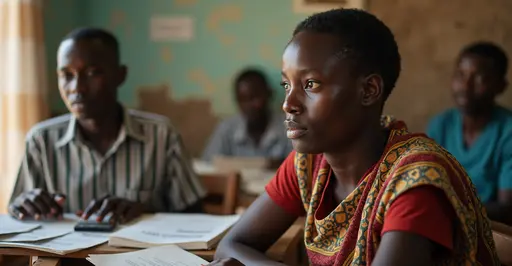Sovereign debt restructuring faces complex challenges with bilateral creditor negotiations and IMF support evolving. Social safeguard design becomes crucial for protecting vulnerable populations during economic adjustments.

Sovereign Debt Crisis and Restructuring Challenges
The global sovereign debt landscape continues to evolve with increasing complexity as countries navigate the delicate balance between fiscal sustainability and economic development. According to recent IMF research, bilateral sovereign debt arrangements present significant risks, particularly with the emergence of new official lenders outside traditional frameworks like the Paris Club. 'The relational overborrowing effect creates welfare losses and increases default risk,' explains Francisco Roldán, co-author of the IMF working paper.
Bilateral Creditor Negotiations Intensify
Bilateral creditor negotiations have become increasingly complex in 2025, with traditional Paris Club members and new creditors engaging in delicate discussions about debt sustainability. The Global Sovereign Debt Roundtable (GSDR), co-chaired by the IMF, World Bank, and G20 Presidency, has been instrumental in facilitating dialogue between debtor countries and diverse creditor groups. 'We're seeing unprecedented coordination challenges as creditor landscapes diversify,' notes a senior IMF official involved in the negotiations.
IMF Support Mechanisms Evolve
The International Monetary Fund has been at the forefront of developing comprehensive support mechanisms for countries facing debt distress. Recent GSDR restructuring guidelines provide a framework for orderly debt resolution processes. The IMF's approach combines financial assistance with technical support, focusing on restoring macroeconomic stability while protecting vulnerable populations. 'Our support extends beyond financial packages to include capacity building and policy advice,' states Kristalina Georgieva, IMF Managing Director.
Social Safeguard Design Takes Center Stage
Social safeguard design has become increasingly critical in sovereign debt restructuring discussions. The IMF's guidance on social safeguards emphasizes protecting vulnerable populations during economic adjustment programs. These safeguards include targeted social protection measures, healthcare access preservation, and education funding maintenance. 'We cannot achieve sustainable debt resolution without protecting the most vulnerable citizens,' emphasizes a World Bank social protection specialist.
Implementation Challenges and Progress
Despite significant advances, implementation challenges persist in sovereign debt restructuring. Coordination among diverse creditor groups remains difficult, and social safeguard implementation often faces resource constraints. However, recent progress through the GSDR framework shows promise for more efficient and equitable debt resolution processes. The October 2025 progress report highlights improved creditor coordination and enhanced social protection integration in restructuring programs.
Future Outlook
The future of sovereign debt restructuring will likely involve continued evolution of multilateral frameworks and increased emphasis on social protection. As global economic conditions remain uncertain, the need for comprehensive approaches that balance creditor interests with debtor country development needs becomes increasingly apparent. The ongoing work of international financial institutions and creditor coordination mechanisms will be crucial in shaping sustainable debt resolution frameworks for years to come.

 Nederlands
Nederlands
 English
English
 Deutsch
Deutsch
 Français
Français
 Español
Español
 Português
Português









